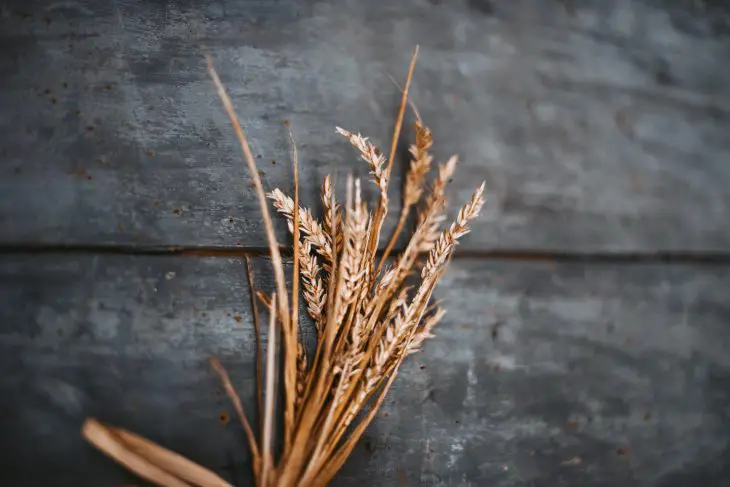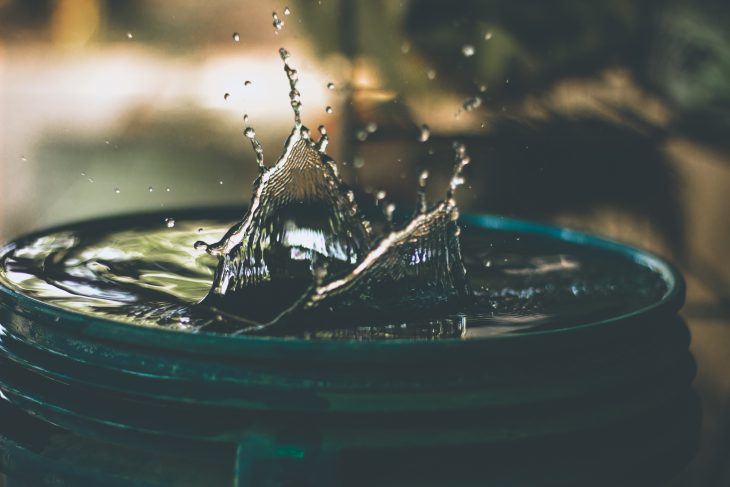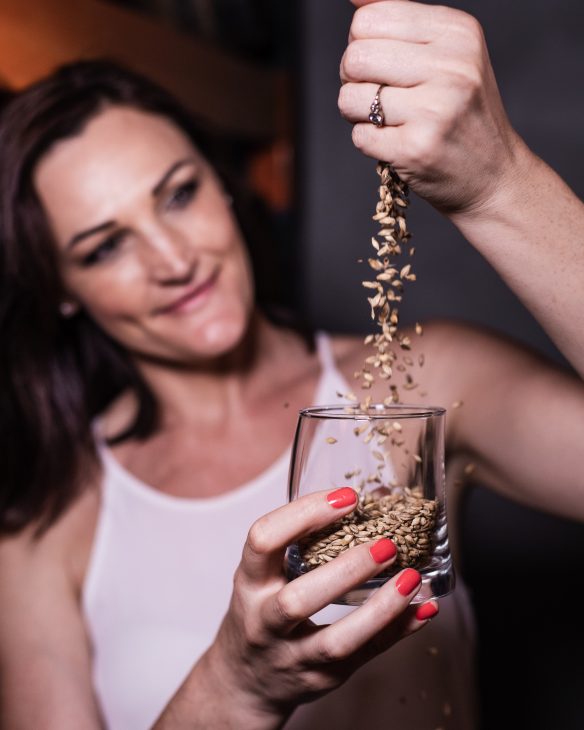Hey there! This site is reader-supported and we earn commissions if you purchase products from retailers after clicking on a link from our site.
Barley is often seen as the very essence of beer, so knowing how to malt barley is important. If you are a home brewer who is eager to learn how to take on this task right from the comfort of your own home, you’re in luck. In today’s post, we’re delving into the process of malting barley so you can have plenty on hand for when you’re ready to whip up your at-home brew.
Table of Contents
- What Is Malted Barley?
- Can I Malt Barley at Home?
- How Long Does it Take Barley to Malt?
- What Is the Difference Between Barley and Malting Barley?
- How to Malt Barley For Whiskey and Beer
- Storing Malted Barley
- Malting Barley: A Simple But Time-Consuming Process
- FAQ
What Is Malted Barley?
Malted barley is barley that has been germinated and converted so that it can be used to make whiskey and other beverages. Truth be told, malted barley is like the heart and soul of a whiskey or beer and can make a big difference in its taste and color. The type of barley used can vary and can yield a distinct taste depending upon the origin and type of barley selected.
There are many types of barley that can be used for malting including 2-row pale malt, 6-row pale malt, Munich malt, Vienna malt, and much more. Each type will yield a distinct flavor. Base malts constitute the vast majority of the ingredients in a beer (besides water and other malting grains) and thus, play a special role in the making of the alcohol.
Typically, the corporate manufacturing of malted barley involves a grain bed and oftentimes a malting floor used after the steeping phase of the malting process. However, there are ways for you to make your own malt barley at home without a grain bed or malting floor to add to beer, whiskey, and other drinks.

Can I Malt Barley at Home?
As mentioned, you can certainly malt barley at home. This base malt can be made using very few supplies including an airtight bag, a bucket, water, and of course, raw whole barley grains. Just know that this process will take time, so be sure to clear your schedule if you plan to complete the process on your own.
How Long Does it Take Barley to Malt?
Between the steeping process, germination process, and drying process, it can actually take a little over a week to complete the process. Thus, if you plan on malting your own barley at home, you’ll want to make sure you’ve got enough time on your hands to get the job done right.
What Is the Difference Between Barley and Malting Barley?
Barley is simply a grain that is used to make malt. It does not come already malted; at least, not naturally. Instead, “malting” is a process by which the grains are soaked, germinated, and dried to form malt barley used to make whiskey, beer, and other drinks.
There are many methods to malting that make use of a food dehydrator, oven, tea ball, diastatic power, and so much more to arrive at the final product. Even after the barley is malted, the result yields only a base malt. Beyond this, a person may play around with flavors, aromas, and roasts to yield the flavor they wish to achieve. They may then convert starches through the mashing process which yields enough diastatic power needed for a good brew.
How to Malt Barley For Whiskey and Beer
Eager to learn how to malt your own barley? Now’s your chance! Below we’ve detailed the steps needed to make a great base malt for your next beverage. Try it out and see what you think!
Part 1: Steeping the Barley
Supplies:
- Large food-safe bucket
- Whole raw barley
- Water
- Large strainer
- Soap
- Baking sheets
- Garbage bag
- Spray bottle mister
- Oven
- Airtight container
For the malting process, be sure to grab a large food-grade bucket. This is what you’ll place your barley in. Be sure that the amount of barley you choose to work with takes up no more than half of the bucket. Otherwise, you won’t have room for water.
The best amount of raw barley to use is 1-4 pounds. Make sure that you don’t use other barley types, such as those that are pearled or hulled, as these will not produce the desired results. The following are the steps involved in the barley steeping process.
- Place the amount of barley you choose to work with in the large bucket. Cover the barley with cool water. Make sure it’s enough to completely cover the grains.
- Allow the malting barley to soak in the cool water for about 8 hours. This soaking is the beginning of the germination process to produce the barley you want to eventually produce your own malt beverages. As your barley soaks, place it in a room that is no hotter than 50-60F (or 10-16C).
Note: When soaking your grains, be sure not to allow them to soak for longer than 16 hours. We’ve recommended only 8 hours here, but you may soak them longer if desired. Just know that over-soaking your barley will cause this malting grain to drown.
- Once the 8-16 hours of soaking time is up, strain your barley and drain the water. As you were soaking the barley, you may have begun to notice sentiments floating in the water. It is for this reason that the malting grains are strained and drained as it rids them of excess dirt and debris.
- As your barley is draining, take hot soapy water and clean out your bucket. Ensure that all sediment is removed, and also, that you remove all soap residue from the bucket. Let the bucket dry completely before moving on to the next step, as this will prohibit mold growth.
- Once you’ve strained your grains, it is time to allow them to air dry. By air-resting your barley, you are allowing them to get enough oxygen so that they won’t die. To do this, transfer the barley to the bucket you’ve already cleaned and dried. Allow it to sit there in the same location where you soaked it to dry for eight hours.
- In the meantime, clean your strainer with hot soapy water, being sure to remove all residue. Dry thoroughly or allow it to air dry.
- Once your barley has completed its 8 hours of drying time, you need to start the soaking and drying process over again. Soak the grains for another 8 hours, strain, and dry your grains in the bucket for eight hours. Be sure to wash and dry the bucket in between uses, ensuring that no soapy residue remains after each wash.
- Once you’ve completed two soak and dry sessions, it’s time to examine your barley for chits. Chits are small white pieces that extend from the bottom of the grain depending on the moisture content. Once most of the barley has these little rootlets attached, you can stop the soaking and drying process. However, if less than 95% of your barley has chitted, you’ll need to perform another soak and dry cycle.
Note: It is important that you are aware that there are some batches of barley that simply aren’t viable. If your barley has not chitted after 3-4 soak/dry cycles, it may be that you need to buy a new batch of high-quality barley.

Part 2: Barley Germination
- To begin germinating grains, spread the chitted barley on a baking sheet. When doing this, make sure that the grains are spread evenly and aren’t piled on top of one another. Use as many baking sheets as you need to to ensure this doesn’t happen.
- Once you’ve got your barley on baking sheets, grab a large unscented trash bag. Place a single baking sheet within each trash bag and fold it closed, placing the folded end underneath the baking sheet. Allow the barley to sit this way in the trash bag as it germinates. The trash bag works to maintain moisture content for proper germination.
- Store your bagged barley in a cool location that is dry, and a well-ventilated place like a cellar, garage, or basement. Make sure these spaces aren’t too hot or too cold, as neither is ideal for proper germination. Hot environments breed mold while cold environments won’t allow the grains to germinate. Thus, the ideal temperature for germination is said to be around 64F.
- Over the course of the next 2-5 days, you’ll need to be misting and flipping your barley every 4-8 hours while checking for germination. You must mist the barley to keep it cool. To do so, remove the barley from the bag it’s in and lightly mist it with cool water while flipping each grain with your hands. This keeps the grains from producing too much heat.
- During those 2-5 days, inspect your grains for acrospires. By flipping your grain over to the smooth side and slicing it full length down the middle, you should see a root-like extension growing up and away from the root. Once this extension is about the size of the barley itself, the germination process is complete.
Part 3: The Barley Drying Process
- Now that your barley has germinated, it’s time for the drying process. The ideal temperature to set your oven to is 125F (or 52C). The lower temperature keeps them from drying out too quickly and killing the enzymes in the grain.
- Add your germinated barley to clean prepared baking sheets. Spread the grains out into an even layer, making sure they aren’t stacked on top of one another.
- Dry the barley in the oven at low temperatures for about 6-8 hours. You’ll know when the barley is sufficiently dry because the rootlets will fall off easily.
- Transfer the barley to a colander once you’ve confirmed that they are sufficiently dry. Shake the grain vigorously within the colander to help more of the rootlets fall off. It can help to shake them outside to prevent a mess of rootlets from happening in your house. You can also attempt this in a mesh bag.
- Lastly, you can transfer your malting barley to an airtight container where they will keep in a cool place away from heat for up to one year.
Dehydrator Process
If you have a dehydrator, you may wish to use it instead of the oven to dry your barley.
If using a dehydrator, remove your barley from the garbage bags and place them on the dehydrator racks. Ensure that all of the barley is in a single layer.
Set the dehydrator to about 120F and leave the barley there for up to 24 hours. The dehydrator will work to dry the barley so that it stops the germination process and draws out excess moisture.
Note: Rather than allow the barley to dry for 24 hours indefinitely, it is recommended you check the barley every 6-8 hours for doneness. The best way to know when the barley is done is to see if the rootlets fall off easily. If they do, you can be sure your barley is ready to remove.

Storing Malted Barley
Once your barley has been malted, it is best to keep them away from moisture. Aim to keep them in a cool dry location with temperatures ranging anywhere from 50-70 degrees. Also, be sure to keep your grains in an airtight container to further protect them from moisture and contaminants.
Ideas for storage containers include 2-3 gallon bins, like garbage cans, with sealing lids. Also, Ziploc or similar sealable bags are good options for keeping our barley fresh.
Note: Sometimes you’ll find that bugs are attracted to your grains. This is yet another reason that it is imperative that you keep your barley sealed. If you find that your barley has become infested with bugs or flies, there isn’t any saving it. Thus, it is always best to store your grains in something sealed and airtight, especially if you plan to store them in the garage or other bug-infested areas.
Malting Barley: A Simple But Time-Consuming Process
Malting barley is a simple, yet time-consuming process. With only a few supplies, you can be that much closer to adding your own malts to whiskeys, beer, and other drinks.
To malt barley at home, you’ll simply need to soak and dry the grains until they begin to chit. Once most of the barley has developed rootlets, you’ll want to place them in a cool dry place to germinate. After germination has taken place, simply dry the grains using an oven or dehydrator. After that, you can store your barley in an airtight container for 6 months or more, depending on the type of barley you use.
FAQ
You should not attempt to malt pearled barley. Pearled barley has its top layer husks removed, as do other types of processed barley. Because of this, it won’t germinate properly. This will not lead to the desired results when malting and mashing.
It’s easy! Once you have followed the aforementioned steps for making malt barley, simply take a rolling pin and crush the resulting grains. Place these crushed grains in an oven at 200-250F until you see a dark syrup excreting from the sprouts. Strain the syrup and store it in glass jars with tight-fitting lids. This can be added to beers when brewing, whiskey, milkshakes, and so much more.
Malt extract comes mainly from barley grains and is formed with water. It has several nutritional benefits and can be added to beer and whiskeys for added flavor and aroma. There are a variety of malt extract types, including, light, amber, and dark. Each renders its own signature taste and can add a special something to your homemade brew.
Green malt is barley that is still young and growing. It is made by manipulating and monitoring moisture content causing the young barley to germinate. It is then used for specialty malts with added flavors and aromas. Only a few distilleries make whiskey using green malt.
Recommended Reading
Controlling Mash Temperature – An Essential How-To Guide
The best beer begins with the best mash; to get it, controlling mash temperature is key. Understand how temperature changes the very nature of the wort and control it!
How to Back Sweeten Mead: The Ultimate Guide
There is a way to alter the sweetness of your mead. Let's learn how to back sweeten mead in a couple of ways.
Ultimate Guide to Roasted Malt: A DIY Guide
Beer is diverse. Wherever you go in the world, it’s guaranteed that you will see beer in a spectrum of color including pale yellows, rich reds, and even deep black
Bottling Homebrewed Beer Fast – An Essential How-To Guide
Here is some good news: an essential guide for bottling homebrewed beer faster than ever. Let’s get right to it.
How Much Does It Cost to Start a Brewery?
How much does starting a brewery cost? Anywhere between $100,000 to a couple million. The total you come up with for your personal business plan may be an eye-popping amount.
Decoction Mash: Your Pro Guide
Decoction mash is an ancient and often misunderstood technique that can take your beers to the next level. Learn more about this process!

